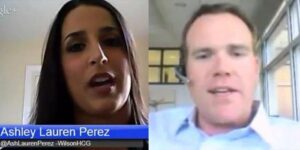Zen And The Art Of Talent Management
Bells and whistles and corner offices aside, talent management is dedicated to one basic question, right? Who’s next? From tending the pipeline right through issues of
Bells and whistles and corner offices aside, talent management is dedicated to one basic question, right? Who’s next? From tending the pipeline right through issues of

How can employers map out a more effective internship program? This infographic offers insights from student employment data…

The world of work is growing more complex and interesting all the time. Who are tomorrow’s leaders and how can they prepare today? Our community speaks…

Is Gen X really the “forgotten generation”? If so, what does that mean as the next wave of leaders must step in to lead the world of work?

Age discrimination has no place at work — and yet it persists. Why? What should we do? The TalentCulture community speaks…

Do you want to lead others? Start by leaving behind age stereotypes that keep us all from getting ahead. Try these 5 steps

What can industry conferences teach us about how to overcome generational stereotypes in the workplace? The Recruiting Trends Social Summit reminded me this week that the TalentCulture community mantra is more than mere words. Together we ARE better…

What role does age really play in today’s workplace? One of our very own #TChat Ambassadors takes a tough look, and offers advice for young professionals…

Today’s workplace is no place for age-based stereotyping. And yet, negative stereotypes persist. How can we break free from these assumptions that threaten professional relationships and business performance?

Even today, negative stereotypes can cast a shadow over our professional lives. See what experts from a top recruiting outsourcing firm say about labels in the workforce – this week’s focus on #TChat…
Why is lifelong learning so critical to professional success? And how can individuals and businesses harness it more effectively at any age – in an era of social technologies? The TalentCulture community weighs in on #TChat Twitter…
Today’s workforce is multi-generational – but unlike 10 or even 20 years ago, age is not the primary determinant of management status. What does this generational mix mean for workplace culture – and how effective are new development models, such as reverse mentoring?
Here’s an interesting people factoid: At least three generations are playing in the workplace sandbox today, with a fourth set to join soon. The Boomers,
There was a great discussion, and at times, debate, on #TChat last week, all about Generation Z and the workplace. It feels like we just
And then there’s this: The term was used in a 1964 study of British youth by Jane Deverson. Deverson was asked by Woman’s Own magazine
Originally posted by Charles Purdy, one of #TChat’s moderators, on Monster Thinking Blog It’s not just that many recent grads are new to the world of work
No matter where you lie on the generational spectrum, you’ll probably agree that we’ve never faced more distractions–or more pressure to deliver results–than in the current business climate. So, how can companies achieve great results today, by focusing on improving employee engagement and commitment?
Years of economic upheaval are dramatically changing the face of today’s workforce. What are the trends – and how does it affect professional paths, as well as workplace culture? Let’s discuss!
How old are you? (Did I really just ask that question?) But seriously, do age differences in the workplace make a difference in your world – for better or worse?
What’s behind most workplace conflict? Are generational issues the primary driver? How can workgroups and businesses as a whole find more constructive ways to work across all ages? #TChat participants voiced their opinions…
None of us is getting any younger. But what does that mean for our performance in the workplace – particularly our ability to reach across generations and work together toward common business goals? That’s the subject of this week’s #TChat…
Every generation has its unique view on the world of work. What does Gen Y look for from employers and workplace culture?
What is Gen Y really looking for from employers? Advice for HR and organizational development professionals…